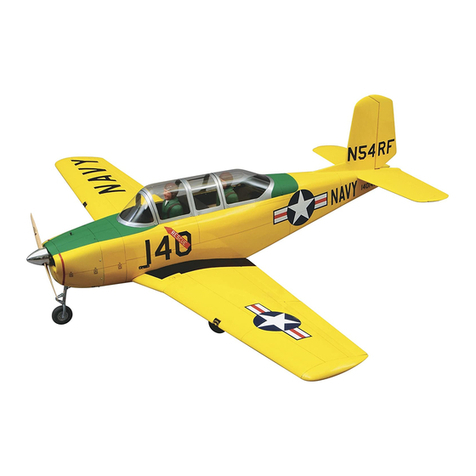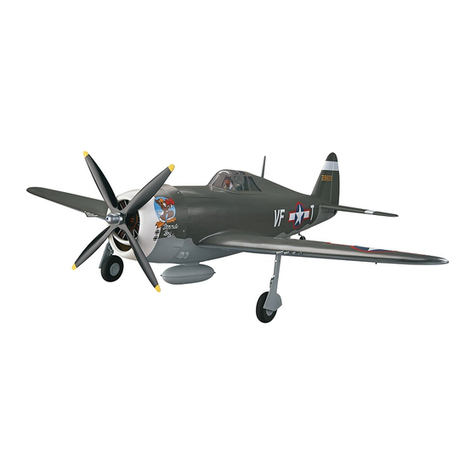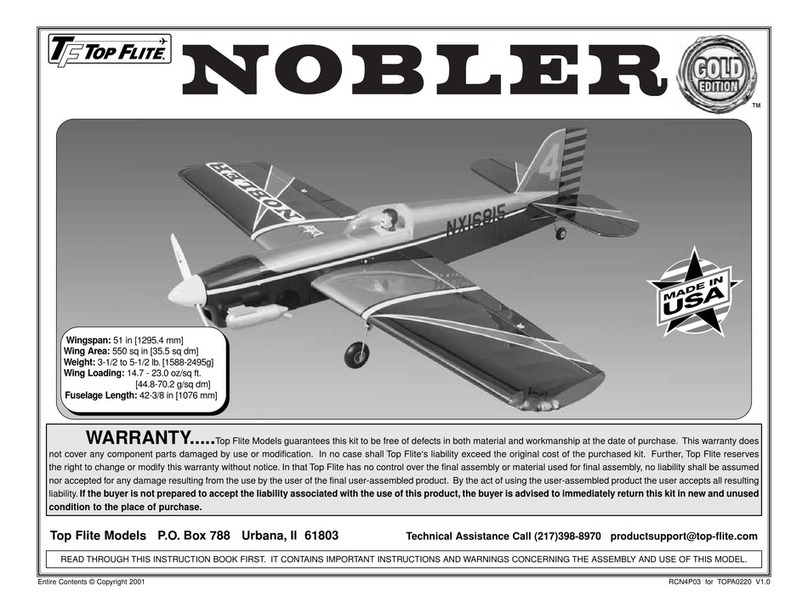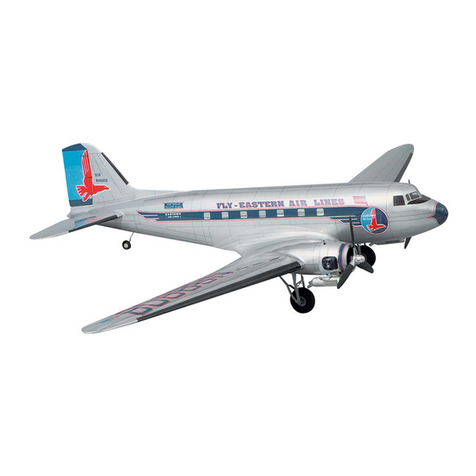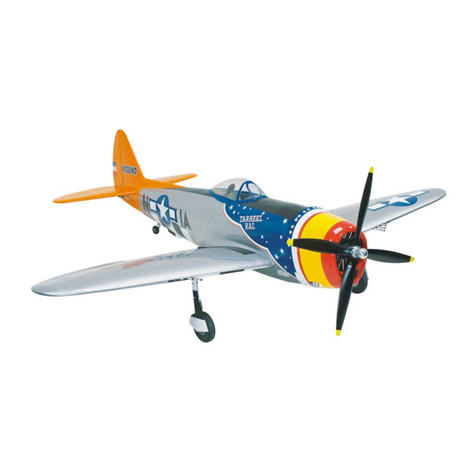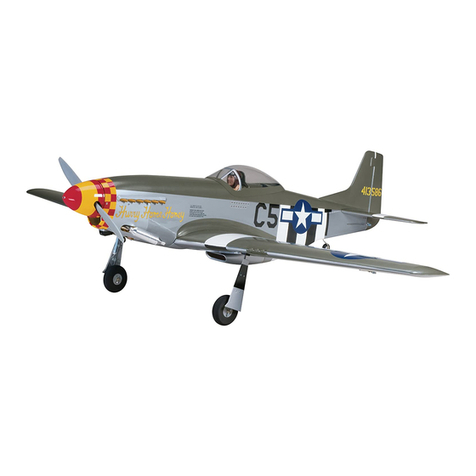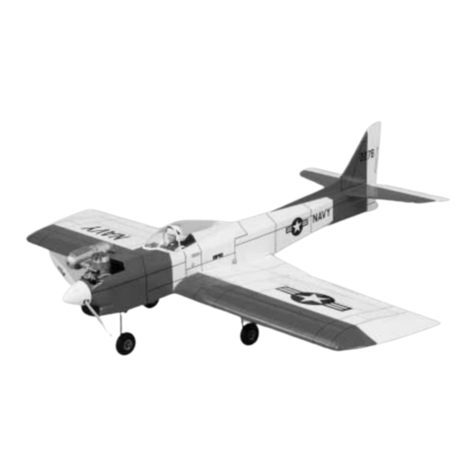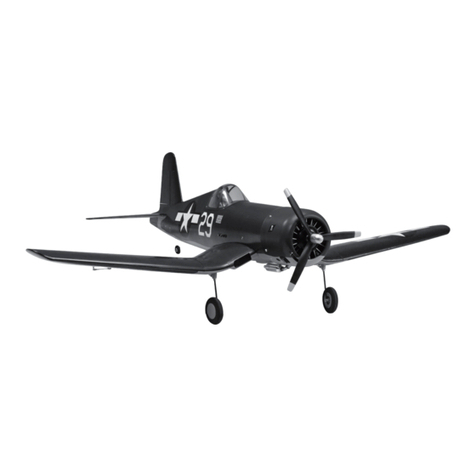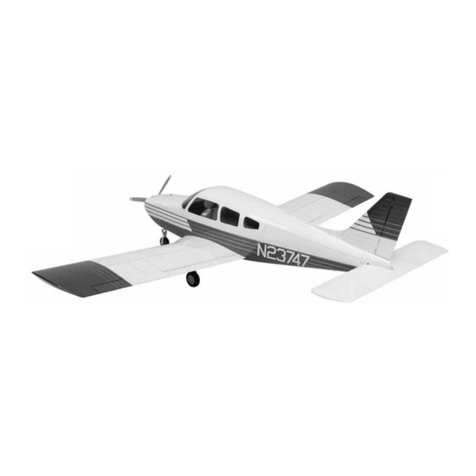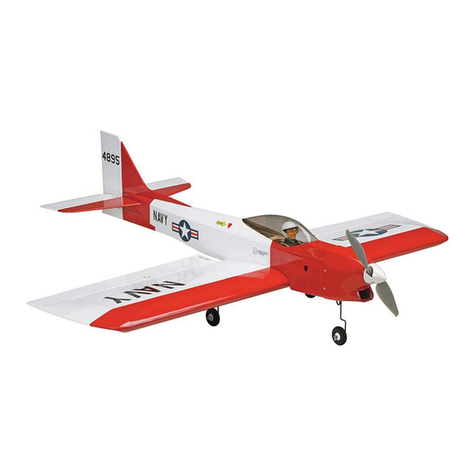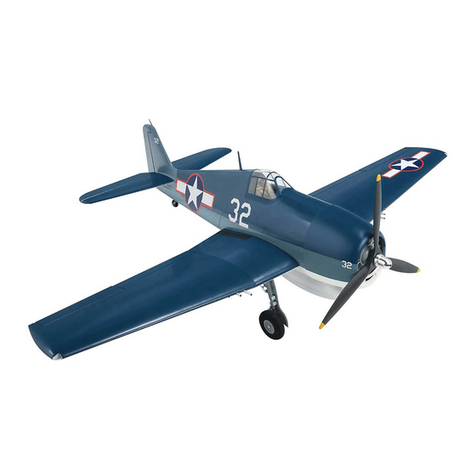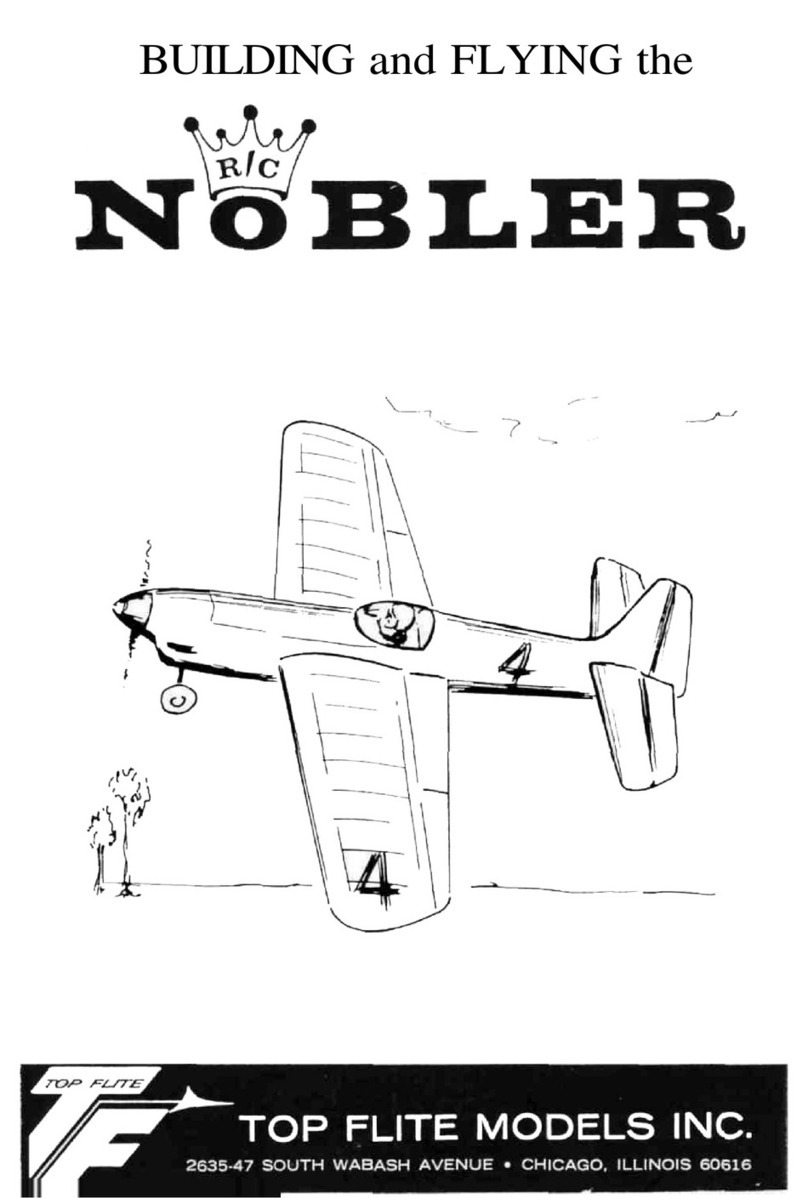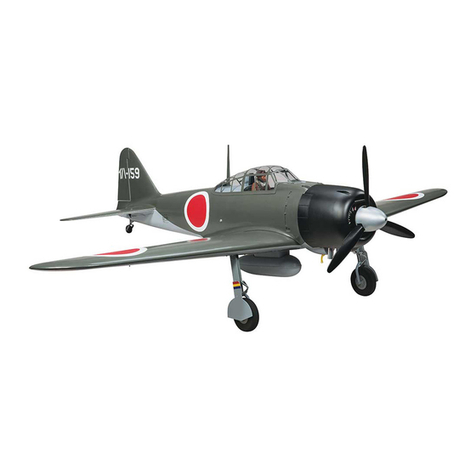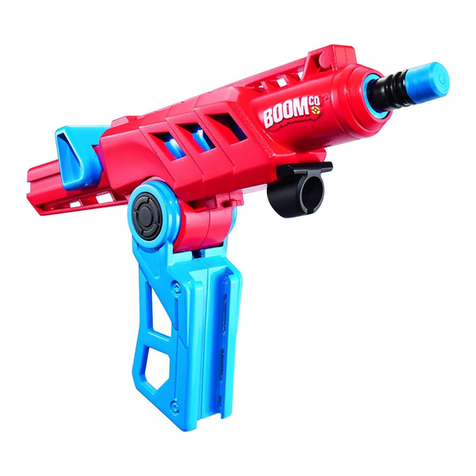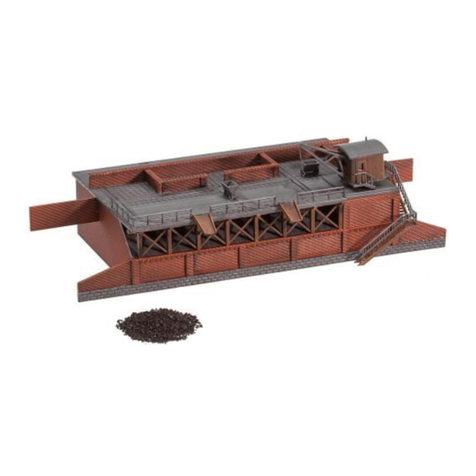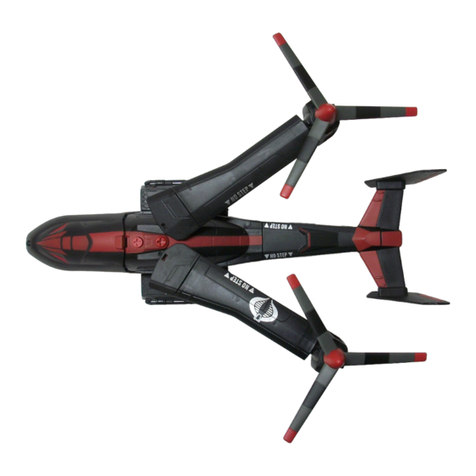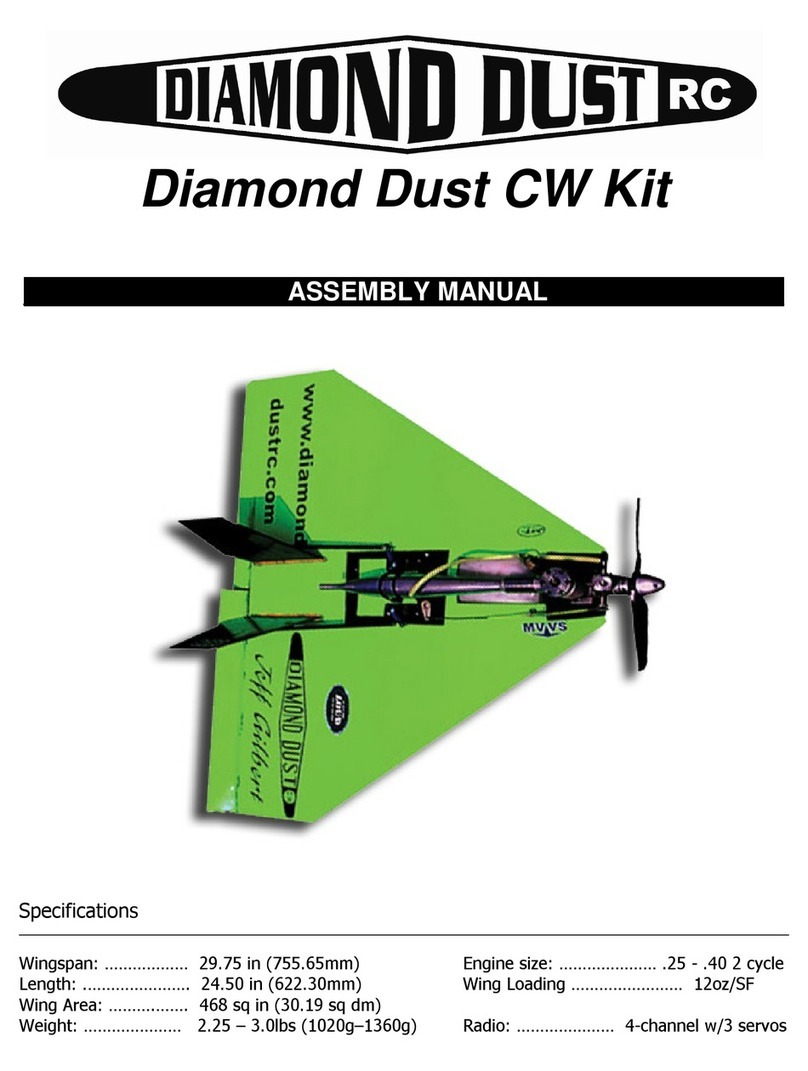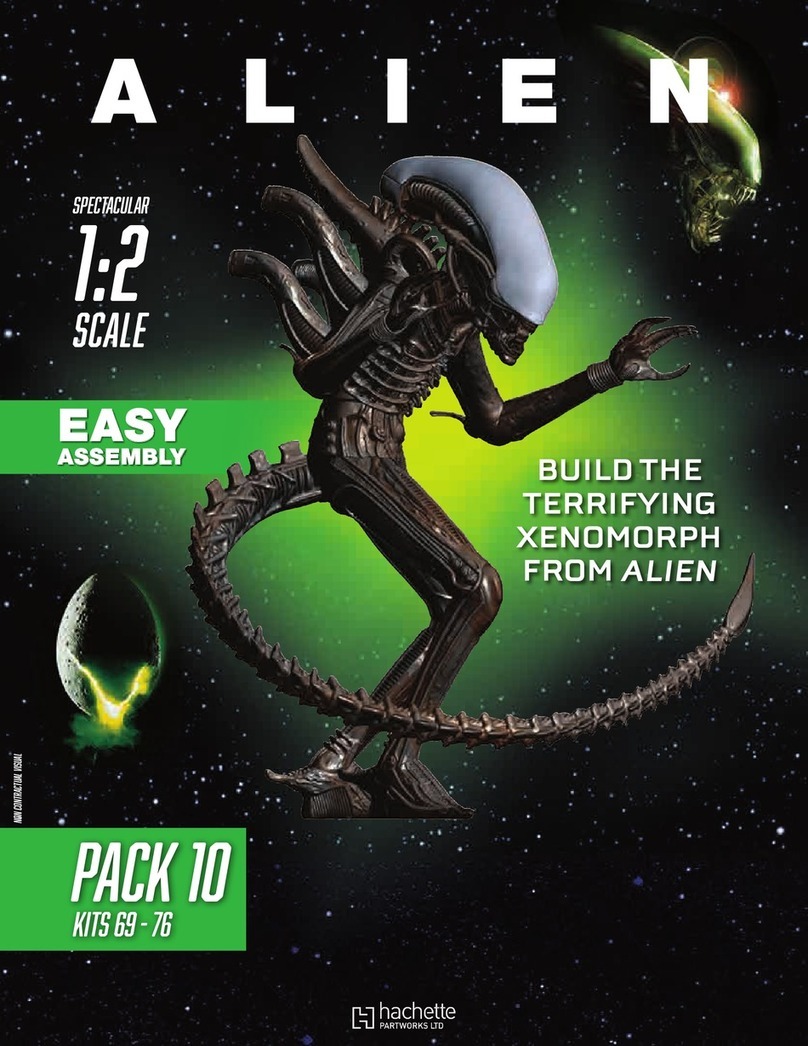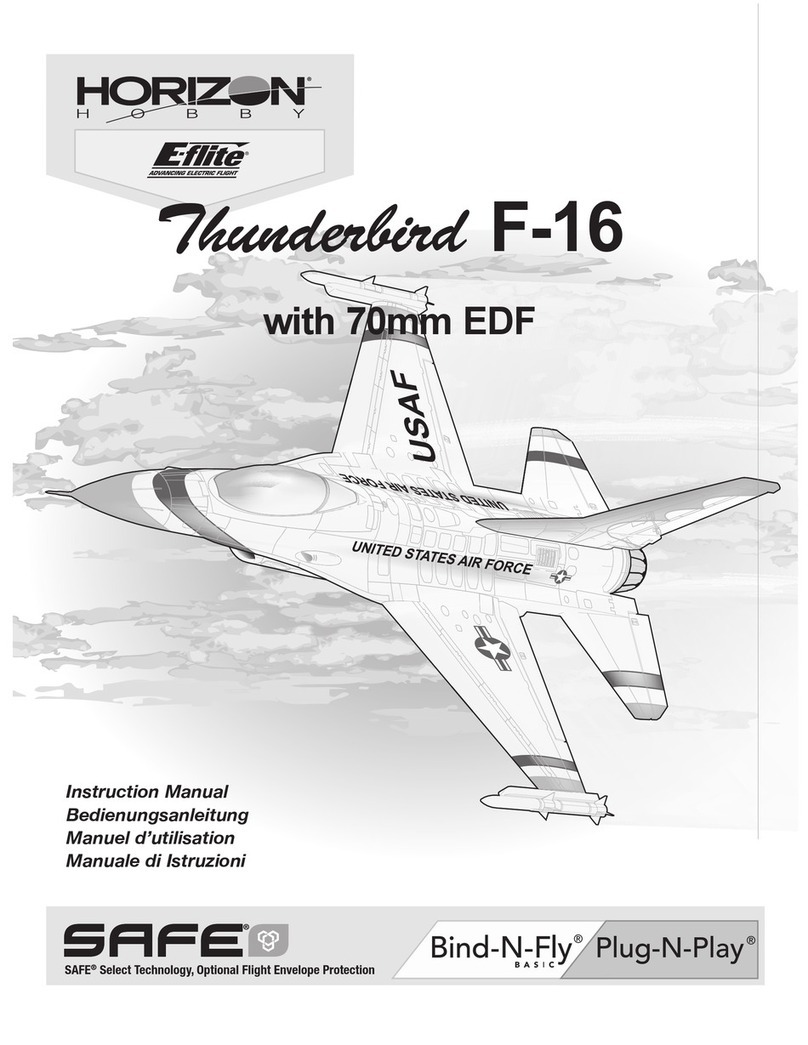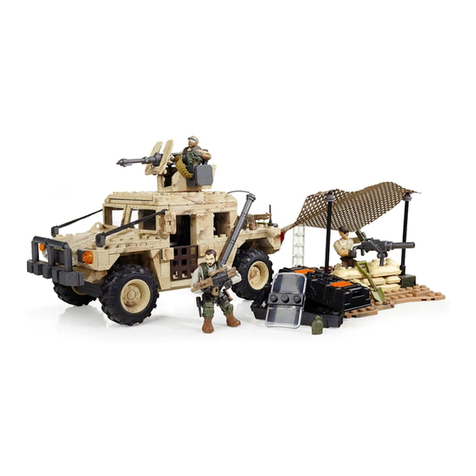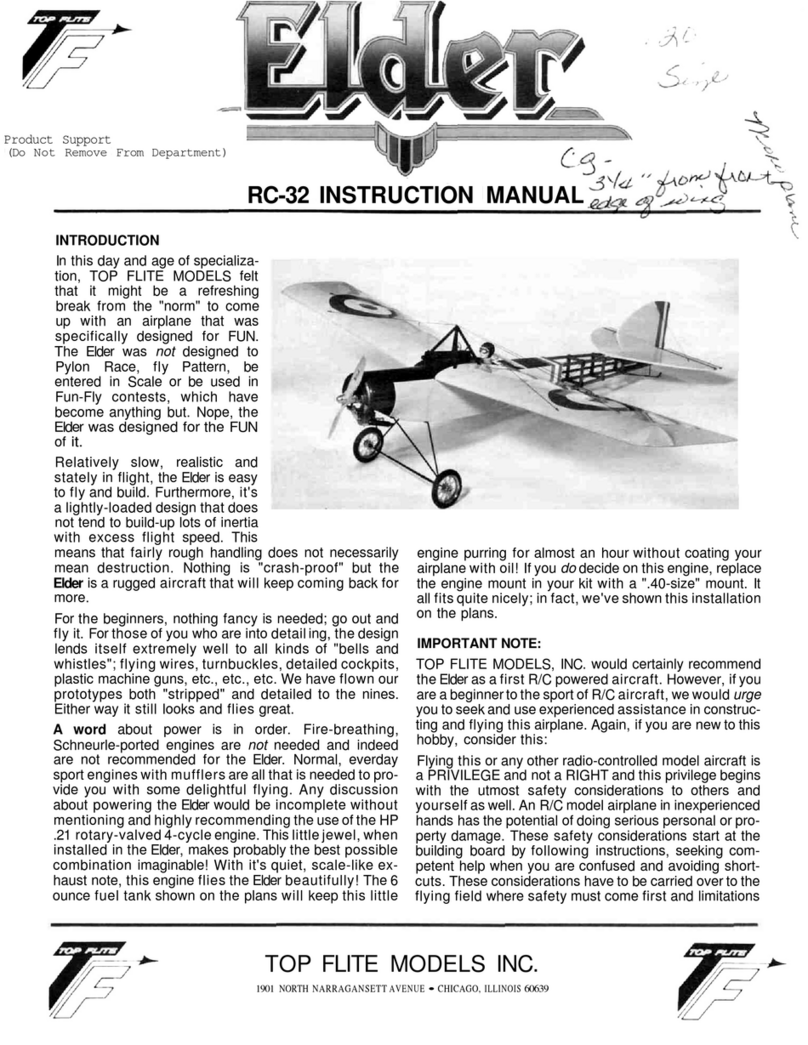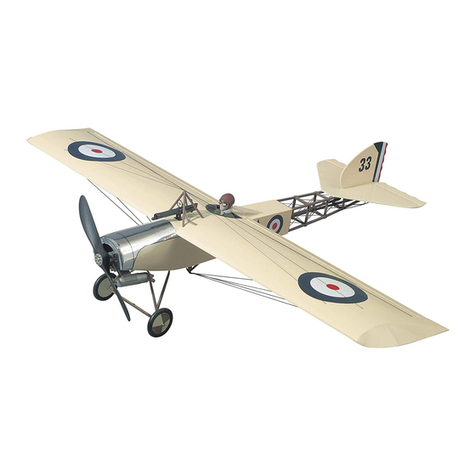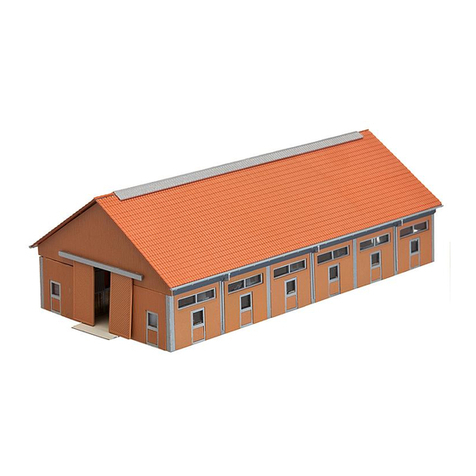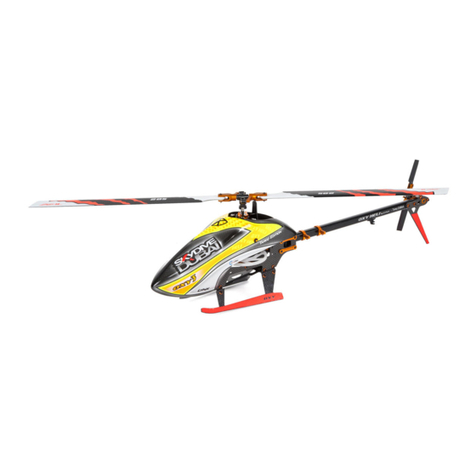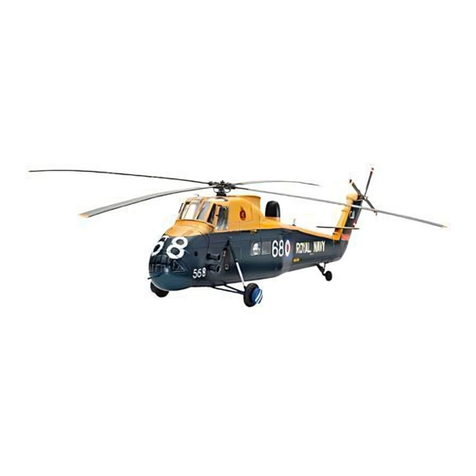
2
TABLE OF CONTENTS
INTRODUCTION ..................................................... 2
Scale Competition ................................................ 3
Academy of Model Aeronautics............................ 3
IMAA..................................................................... 3
SAFETY PRECAUTIONS ....................................... 3
DECISIONS YOU MUST MAKE.............................. 4
Engine Recommendations ................................... 4
Retractable Landing Gear..................................... 4
Radio Equipment .................................................. 4
ADDITIONAL ITEMS REQUIRED .......................... 5
Hardware and Accessories................................... 5
Adhesives and Building Supplies..........................5
Optional Supplies and Tools ................................. 5
Covering Tools ...................................................... 5
KIT INSPECTION.................................................... 6
ORDERING REPLACEMENT PARTS .................... 6
PREPARATION ....................................................... 9
ASSEMBLE THE WING PANELS ........................... 9
Hinge the Flaps and Ailerons ...............................9
Mount the Engines.............................................. 10
Hook Up the Throttle and Install the Fuel Tank...11
Mount the Main Landing Gear ............................ 12
Retract Installation........................................... 12
Fixed Gear Installation..................................... 13
Mount the Fiberglass Nacelle Covers................. 13
Mount the Main Landing Gear Doors
(Retracts Only) ................................................ 14
Hook Up the Main Landing Gear Doors .............16
Mount the Cowl................................................... 19
Mount the Replica Engines................................. 22
Hook Up the Flaps and Ailerons......................... 23
ASSEMBLE THE TAIL .......................................... 24
Hinge the Elevators and Rudders....................... 24
Hook Up the Rudders and Elevators ..................25
Mount the Nose Gear .........................................26
Hook Up the Nose Gear Door
(Retract Only) .................................................. 29
FINAL ASSEMBLY ............................................... 30
Assemble the Cockpit .........................................30
Hook Up the Air System .....................................31
Complete the Radio Installation.......................... 32
Mount the Inboard Wing Panels..........................33
Mount the Outboard Wing Panels....................... 34
SCALE FEATURES .......................................... 3535
Mount the Nose-Gunner Canopy........................ 37
Install the Nose-Gunner Cabin ...........................38
Mount the Top Turret & Machine Guns................ 38
Finish the Tail-Gunner Cabin .............................. 39
Mount Side Gun Packs & Waist Gun Windows...40
Mount the ADF “Football” Antenna ..................... 41
Mount the Propeller Hubs................................... 41
Apply the Decals................................................. 41
GET THE MODEL READY TO FLY ....................... 41
Balance the Model (C.G.) ................................... 42
Balance the Model Laterally ...............................42
PREFLIGHT .......................................................... 42
Check the Control Directions.............................. 43
Set the Control Throws ....................................... 43
Identify Your Model ............................................. 43
Charge the Batteries........................................... 43
Balance Propellers ............................................. 43
Ground Check..................................................... 43
Range Check...................................................... 44
ENGINE SAFETY PRECAUTIONS....................... 44
AMA SAFETY CODE (Excerpts) ......................... 44
CHECK LIST......................................................... 45
FLYING.................................................................. 45
Mount the Wings................................................. 45
Takeoff ................................................................ 46
Flight................................................................... 46
B-25 Engine-Out Flying Procedures................... 46
Single Engine-Out Procedures ........................... 46
Landing............................................................... 47
SERVO EXTENSION CHARTS............................. 48
ENGINE MOUNT TEMPLATES ............................ 51
INTRODUCTION
Thank you for purchasing the Top Flite Gold Edition
1/9th-scale B-25J Mitchell ARF. While no ARF model
will provide the level of detail necessary to take
“high-static” at premier scale competitions, you’ll still
be amazed at the level of detail and the number of
scale features included with this model! And we’ve
done our best to balance the level of authenticity and
detail with the requirements for simplicity that an ARF
modeler expects. For example, the main landing gear
doors on the full-size B-25 close both after the gear
has retracted and after it has extended (look at photos
of a B-25 sitting on the tarmac—notice that the gear
doors are closed!). But rather than duplicating the
full-size configuration (which would require a larger
radio with additional channels, air control valves on
every door, additional pushrods, linkages, air lines,
sequencers and considerable time, expense and
skill), and rather than abandoning functioning doors
altogether, we did it the “hard way” back in the shop by
taking time to figure out how to incorporate operating,
scale-appearing landing gear doors that the average
ARF builder could both afford and assemble. The
Top Flite B-25 ARF features operating, spring-loaded
doors that use mechanical levers to open and close,
thus eliminating all the aforementioned paraphernalia
that would be required.
And while other scale details including the nose-
gunner interior, cockpit interior, tail-gunner canopy
and machine guns are not exact replicas, these scale
features still “get the point across” with their presence
and stand-off accuracy. With all this detail also comes
the time commitment to put it all together, but in the
end we know it will all be worthwhile when you’re
executing slow fly-bys straight down the runway with
the flaps and gear extended and everybody else at
the field standing by watching.
The“Gold” B-25 is also a user-friendly model for breaking
down for transport and set up. Most modelers will simply
remove the outboard wing panels allowing the model to
fit easily into a mini van. If it’s still too big, the inboard
wing panels and vertical and horizontal stabilizers can
also be easily removed with the sturdy building stand
supporting the model during the process.
For the latest technical updates or manual corrections
to this model visit the Top Flite web site at www.top-
flite.com. Open the “GOLD EDITION ARFS” link on
the left side of the page and click on image of the B-25
that appears. If there is new technical information or
changes there will be an “Important! TECH NOTICE”
box on the upper left corner of the page. Click on the
Tech Notice box to read the info.




















